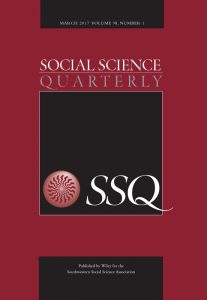the (post-structural) new-media digital-divide
by nathan jurgenson
A major study (.pdf) on the way teens use social networking sites suggests that,
“…their participation is giving them the technological skills and literacy they need to succeed in the contemporary world. They’re learning how to get along with others, how to manage a public identity, how to create a home page.” [quote is from this article’s coverage]
 Parents can no longer view MySpace as just a waste of time. In fact, so important are the skills being learned that we might hypothesize a new sort of habit-based digital divide taking shape.
Parents can no longer view MySpace as just a waste of time. In fact, so important are the skills being learned that we might hypothesize a new sort of habit-based digital divide taking shape.
Typically, the “digital divide” refers to physical access (access to the Internet, cell phones, etc), and this remains a crucial issue. However, as access becomes more diffuse, we can put forward another important non-material digital divide: between those who have and those who have not learned the important skills of social networking and online content production.
Pierre Bourdieu describes in his book Distinction how things like skills, habits and tastes are often learned outside of the education system. That is, those habits that the upper class learn that reproduce their status as the upper class are not simply the product of access to education but are also learned more informally. Similarly, in the case of the Internet, a different sort of digital divide could be based on computer usage behaviors that have little to do with material access. Much like the rest of the social world, adolescents are learning the skills online essential for future success, and they are learning these skills unequally. Who will best be able to utilize new media to build social capital? Who will not?
This reformulated non-material digital divide will be a split between those who just consume Internet content and those who both produce and consume content (the prosumers). It will be between those who experience the Internet in a solitary way and those who effectively network. [On a global scale, this is already playing out]
Do we conclude on the side of Bourdieu that the democratizing potential of the Internet could be usurped by the interest of the upper class in making itself distinct in its usage, thus perpetuating its status? Or should we see the Internet as a tool that will be used creatively to blur class distinction? Will class even be the primary factor for this non-material digital divide? ~nathan
![]() Read More: The New York Times: Teenager’s Internet Socializing Not a Bad Thing
Read More: The New York Times: Teenager’s Internet Socializing Not a Bad Thing
The Digital Divide: The Special Case of Gender




1756-2589/asset/NCFR_RGB_small_file.jpg?v=1&s=0570a4c814cd63cfaec3c1e57a93f3eed5886c15)

Great article!
This post compliments my previous posting about Juicycampus.com in that it highlights the issues of youth and internet use and how much is too much and how fast is too fast. That said, I agree with wholeheartedly with the notion that Internet communications are a form of class reproduction. How could they not be? I have teenagers, and in watching their Facebook interactions, I have become aware that there are usage norms that are distinctly class oriented. These norms are very subtle, but paramount to cluing users in to the status and cultural knowledge of other users. In fact, something like tagging yourself in your own pictures is as much as a class gaff as wearing white shoes after labor day used to be. Sounds ridiculous, but I would argue that Internet use is even more of a means of class reinforcement than more tangible measures have traditionally provided.
Your point about distinction is very interesting! I wonder about the interaction effects that might occur due to both physical access and distinction?
Interesting piece; the idea of a non-material digital divide and the potential for social networking skills to be a supporting mechanism for reifying class boundaries will be an issue to watch as technology changes and hence, skill sets change.
This raises questions concerning how technology should be taught and how it should be implemented in schools. How should social networking be used as a tool in education and if it is, then are social networking tools being taught in schools uniformally?
However, schools reproduce social classes and maintain the interests of upper classes. How might lower/middle classes use their hidden transcripts, so to speak, to create a space for themselves in this brave new world of social networking?